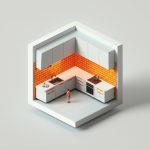Planning a killer event? Forget the sticky notes and endless redrawing! This guide walks you through the best floor plan software for event planners. We’ll compare top programs, show you how to use them, and give you pro tips to create amazing layouts that wow your guests. Whether you’re planning a small party or a massive conference, we’ll help you find the perfect software and design a floor plan that makes your event unforgettable. Let’s get started!
Floor Plan Software for Event Planning Success: Design Your Dream Event
Planning a killer event? Forget sticky notes and frantic sketches – smart floor planning software is your secret weapon. It’s not just about arranging chairs; it’s about crafting an amazing experience for your guests. Think smooth flow, happy attendees, and a stress-free event for you. Let’s dive into how the right software can transform your event planning from stressful to seamless. Consider it like having a real-time sandbox to play with that helps you bring your vision to life.
Picking the Perfect Software: A Head-to-Head Comparison for Event Layout Design
Lots of great software options can help you create amazing event layouts. We’ll compare a few top contenders, highlighting what makes them shine (and where they might stumble). Keep in mind: the best choice depends on your budget and what you’re trying to achieve, as well as the size and scale of the events you typically manage. Pricing varies, so always check official vendor websites for the latest details on event planning software pricing. Many offer free trials or demo versions; taking advantage of these is highly recommended before committing to a purchase.
| Feature | EventFloorPlanner | SocialTables | SmartDraw | AllSeated |
|---|---|---|---|---|
| User-Friendliness | Super easy drag-and-drop; newbie-friendly | Pretty simple, but a slight learning curve | Easy to use with a user-friendly interface; quick to learn with provided templates | Steeper learning curve, but powerful once mastered |
| 3D Views | Nope | Yes! Really realistic-looking 3D models | Yes | Excellent; highly detailed 3D rendering capabilities |
| Guest List Integration | Yup, makes seating assignments a breeze | Yes, built-in seating chart tools | Yes | Strong guest list integration, allows for easy seating chart creation and management |
| Capacity Checkers | Got it! | Yes | Yes | Robust tools for capacity planning, ensuring compliance with safety regulations |
| PDF & Exports | Excellent quality PDFs; lots of options | Yes | Yes | Supports various export formats |
| Works with Other Tools | Details scarce | Integrates with other event tools | Imports CAD files; integrates with Microsoft Office | Strong ecosystem of partnerships and integrations with other event management platforms |
| Handles Big Events? | Small to huge events – no problem | Built for big events | Suited for small to medium events; performance may degrade with extremely complex layouts | Excellent; suitable for large-scale events, handling complex floorplans with ease |
| Collaborative Planning | Limited collaborative features | Supports real-time collaboration, allowing multiple users to work on the same floor plan | Supports collaborative design with shared access and real-time updates | Robust collaborative tools for team-based planning and design |
| Mobile Access | Mobile-Friendly design for access on the go | Limited mobile access | Accessible on mobile devices via web browser; native app may offer enhanced features | Limited mobile access |
Your Step-by-Step Guide to a Basic Floor Plan for Conference Planning
Let’s pretend we’re planning a conference. We’ll use EventFloorPlanner – it’s super intuitive. Creating effective and efficient conference floor plans is essential for a successful event. A well-designed plan maximizes space, promotes attendee interaction, and ensures a smooth flow of traffic.
- Map Your Venue: First, accurately enter your venue’s dimensions. This is the foundation of your whole plan. Use precise measurements to avoid scaling issues later.
- Add Key Features: Place essential elements like the registration table, stage, speaker area, restrooms, etc. Think about how people will move around – you want a smooth flow! Consider the location of power outlets and Wi-Fi access points as well.
- Arrange Seating: Set up chairs, tables – whatever your conference needs. Consider breakout sessions and lecture-style seating for larger presentations. Different seating styles can impact the capacity and the overall atmosphere of the event.
- Strategic Placement is Key: Plan out networking areas, food and drinks, exhibits, etc. Think about sightlines and make sure everything is accessible. Ensure sufficient space around food and beverage stations to prevent congestion.
- Refine, Refine, Refine: Review your design. Does the flow work well? Is there enough space between things? Get feedback from your team and stakeholders and make adjustments as needed.
- Share Your Masterpiece: Once you’re happy, export your plan as a PDF or whatever format works best for sharing with your team and other stakeholders. Export in multiple formats to ensure compatibility with different devices and software.
Tweaking Your Floor Plan for Different Events: Weddings, Corporate Gatherings, and Conferences
The perfect floor plan changes depending on the type of event. Tailoring your event floor plan software to specific event types ensures a positive and memorable experience for all attendees. Understanding the nuances of each event type will help you create a floor plan that meets the specific needs and expectations of your guests.
Weddings: The dance floor and head table are stars here. Make sure seating is efficient, and consider separate spots for cocktail hour and dinner. Position the dance floor in a central location to encourage guest participation.
Corporate Events: Smooth networking is key. Think breakout rooms, different zones for activities, and maybe even a dedicated quiet zone. Provide ample seating in networking areas to facilitate conversation.
Conferences: Plan for breakout sessions, presentation halls, registration areas, and plenty of space for networking. Clear signage is crucial! Place signage strategically to guide attendees to different areas of the venue.
Remember, smooth flow and a great guest experience are what you’re aiming for! A well-designed floor plan is the key to success. It can turn an ordinary venue into a truly amazing event space. Choose your software carefully, and happy planning! Don’t forget to conduct a final walkthrough of the venue to identify any potential issues that may not be apparent on the floor plan.
How to Compare Event Floor Planning Software Features for Different Venue Sizes
Key Takeaways:
- The event planning software market offers diverse solutions; choosing the right one depends on your specific needs.
- Consider factors like ease of use, features, integration capabilities, pricing models, and scalability when comparing software.
- Prioritize software that seamlessly integrates with your existing event management tools. Seamless integration can save time and reduce errors.
Mastering the Art of Software Selection for Optimized Event Space Planning
Planning a flawless event, whether it’s a small gathering or a large-scale conference, hinges on efficient space management. That’s where event floor planning software becomes indispensable. But with so many options available, how to compare event floor planning software features for different venue sizes can feel overwhelming. This guide helps you navigate the choices, empowering you to make informed decisions and select the software that best suits your unique needs and budget.
Key Features to Consider in Event Software for Space Optimization
Before diving into specific software, let’s pinpoint the crucial features to assess. These features vary in importance depending on your event’s size and complexity. Investing in event space optimization is essential for creating memorable experiences, ensuring guest comfort, and maximizing the venue’s potential for the event.
- Ease of Use: Intuitive drag-and-drop interfaces are a must. Can you easily learn the program without extensive training? Look for software with a comprehensive knowledge base and responsive customer support.
- Feature Set: Does the software offer 3D modeling for realistic visualizations? Does it integrate with your guest list? Can it help with capacity planning? What export options are available (PDFs, images, CAD files, etc.)? The more comprehensive the feature set, the greater the flexibility and control you have over your event layout.
- Integrations: Seamless integration with other event planning tools like ticketing, CRM, or catering management systems is valuable. Integration streamlines workflows, eliminates data silos, and improves overall efficiency.
- Pricing: Pricing models differ dramatically. Explore monthly subscriptions, annual licenses, or one-time purchases. What features are included in each pricing tier? Consider hidden costs such as training fees or add-on modules.
- Scalability: Can the software handle both small, intimate events and massive conferences? Flexibility is key. Choose software that can grow with your business and adapt to your evolving needs.
- Customer Support: Access to reliable and responsive customer support is essential, especially when you encounter technical issues or need assistance with specific features.
Comparing Popular Options for Event Layout Software
Let’s compare two popular choices (pricing will need to be independently verified). Note that while specific features might vary based on the pricing tier, the core functionalities remain consistent.
| Feature
- Modern Kitchen Backsplash Ideas To Inspire Your Refresh - December 19, 2025
- Modern Backsplash Ideas: A Guide to Todays Kitchen Trends - December 18, 2025
- Ceramic Kitchen Wall Tiles: Style and Protection for Your Walls - December 17, 2025









